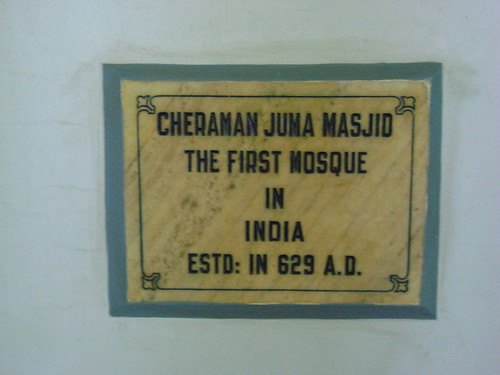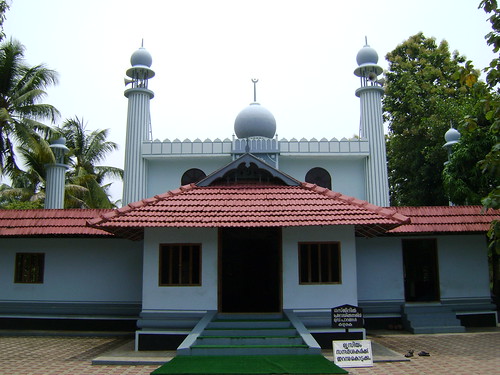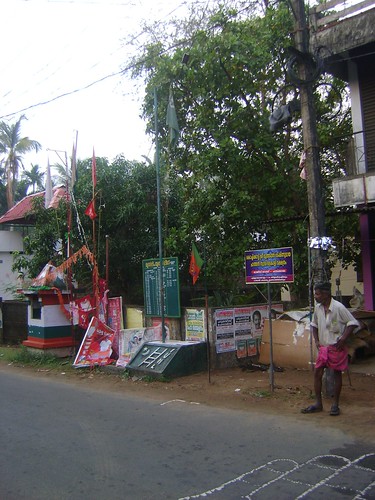By Kashif-ul-Huda, TwoCircles.net
To find the first Muslims of India, you must visit the first mosque of India, Cheraman Juma Masjid in Kodungallur. A simple mosque, Cheraman Juma Masjid was named after a famous king, King Cheraman Perumal. King Perumal’s capital was in Kodungallur which is now in the Thrissur district of Kerala.


Legend has it that King Perumal became Muslim and decided to go visit Prophet Mohammad. He travelled to the Hijaz to meet the Prophet Mohammad. On the way back, King Perumal passed away. Before passing away, Cheraman instructed his companions to go on with the journey and establish a masjid in Kerala.
The Masjid is said to have been established in the year 629CE. This means that it was constructed just 7-8 years after the hijrah of the Prophet to Medina. Some people doubt this story, but it is a fact that Malabar was linked to Arabs through maritime trade. So if it was not within 10 years of hijrah then at least 100-200 years after Islam spread in the Arabian Peninsula it was well established in Malabar.
The story of Islam and Muslims in Malabar is truly unique. Muslims here lived harmoniously under non-Muslim rulers for thousand years. This harmony is reflected in the old historical mosques that litter this region- a few of them almost a thousand years old. Borrowing heavily from local artistic talent and tradition, these beautiful structure provide the evidence that Islam arrived here early and its growth has been harmonious.
It is no accident that a large number of Malyalees work in gulf countries; Malabar had trade relations with Arabs since time immemorial. The roots of Mappilas or Moplahs, as the Muslims of this region are called, can be found in this trade. As William Logan suggests in Malabar Manual, by the ninth century, Muslims had become a distinct community. Arabs who came and settled here married with the local population and a distinct group called Mappilas was born.
Mappilas, took advantage of Arab and Malayalam traditions and created something unique. This culture produced its own literature, songs, music, and dances and even a language, Arabi-Malayalam. They lived and worked for a non-Muslim ruler, Zamorins of Calicut, managing maritime trade and navy.
Mappilas and Malabar enjoyed a peaceful and prosperous lifestyle until the sixteenth century. At this time the Portuguese arrived in India and their piracy on the Indian Ocean disrupted the long established trade routes on the water. This, and the brief rule of Hyder Ali and Tipu Sultan created the environment of distrust between the communities which further escalated under the British.

Khateebs in Malabar deliver khutba with a sword in hand, this one captured from the Portuguese.
Mappilas in north Kerala, who were associated with the agricultural economy, revolted against their Hindu landlords and the British rule. The colonial masters termed the economic revolt “communal violence.” Not unlike the Muslims of North India, distrust of the British was responsible for the Malabari Muslims falling behind in education and missing out on new economic opportunities.
The turn of the last century saw Muslim leaders and organizations thinking about the educational backwardness of the people and many schools were started in Muslim areas. Kerala’s efforts towards complete literacy helped narrow the educational gap between Muslims and other communities.
According to the 2001 census of India, Kerala is home to 31.84 million people. 56.2% of Keralites are Hindus, 24.7% Muslims, and 19% are Christians. This region of India is very religious and very political. Religion is proudly displayed in homes, businesses, and even cars by Hindus, Muslims, and Christians alike. While the rest of India shows a disinterest in electoral politics, Kerala shows a fascinating intersection between religion and politics.

In May 2009, TwoCircles.net paid a visit to Malabar to learn about the Muslims and their rich history. In this special series on Malabar we also look at some new trends –some positive and some negative- that will shape the future of this vibrant community of Muslims.
[all photos: TwoCircles.net]
Series page: http://twocircles.net/special_reports/malabar.html

